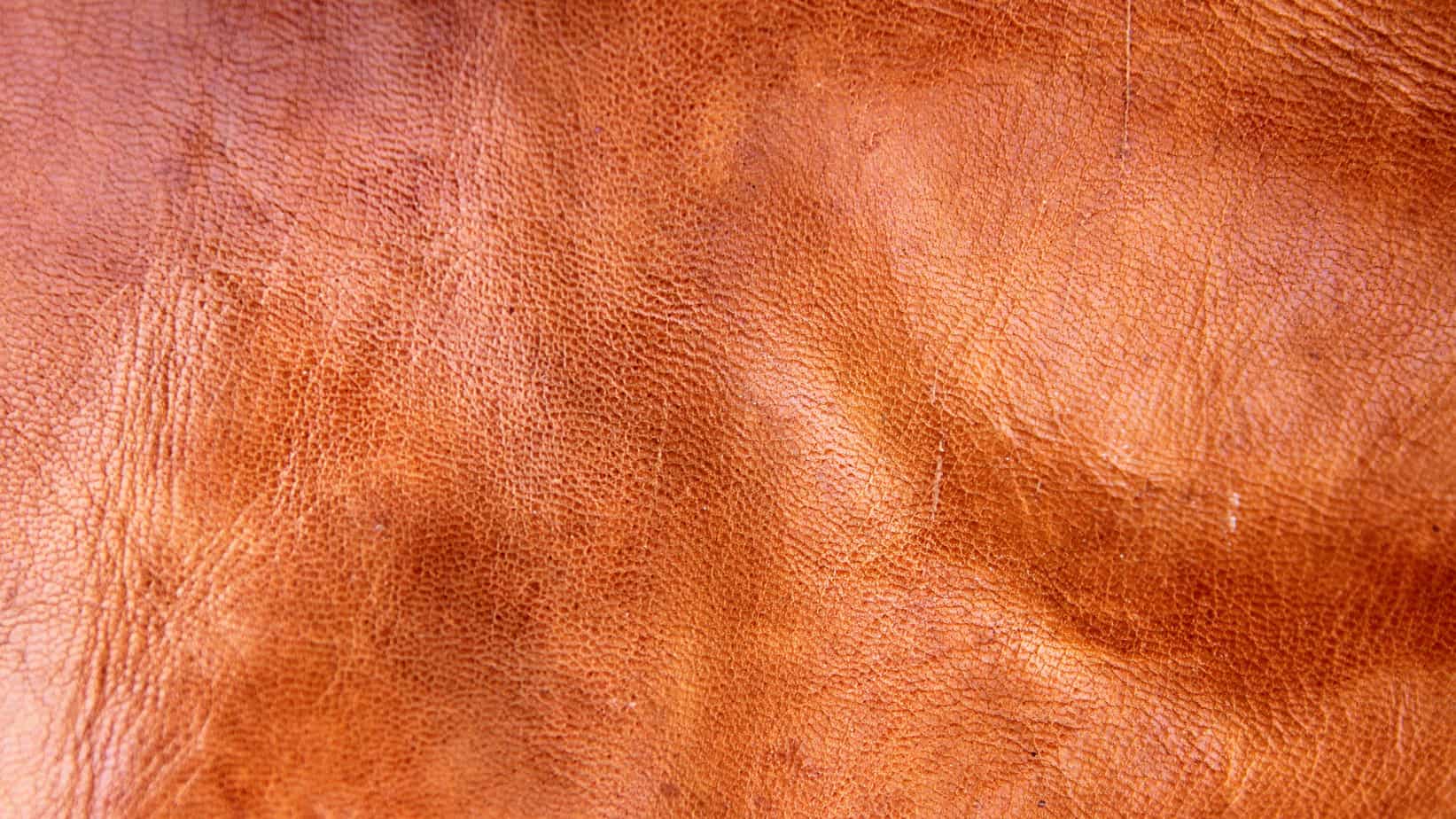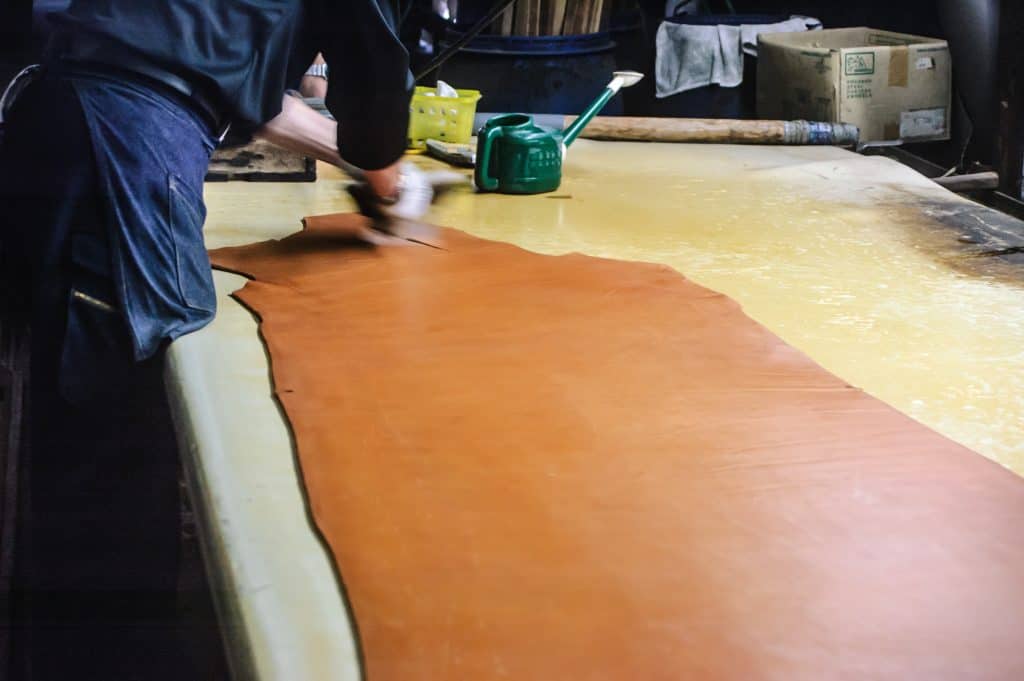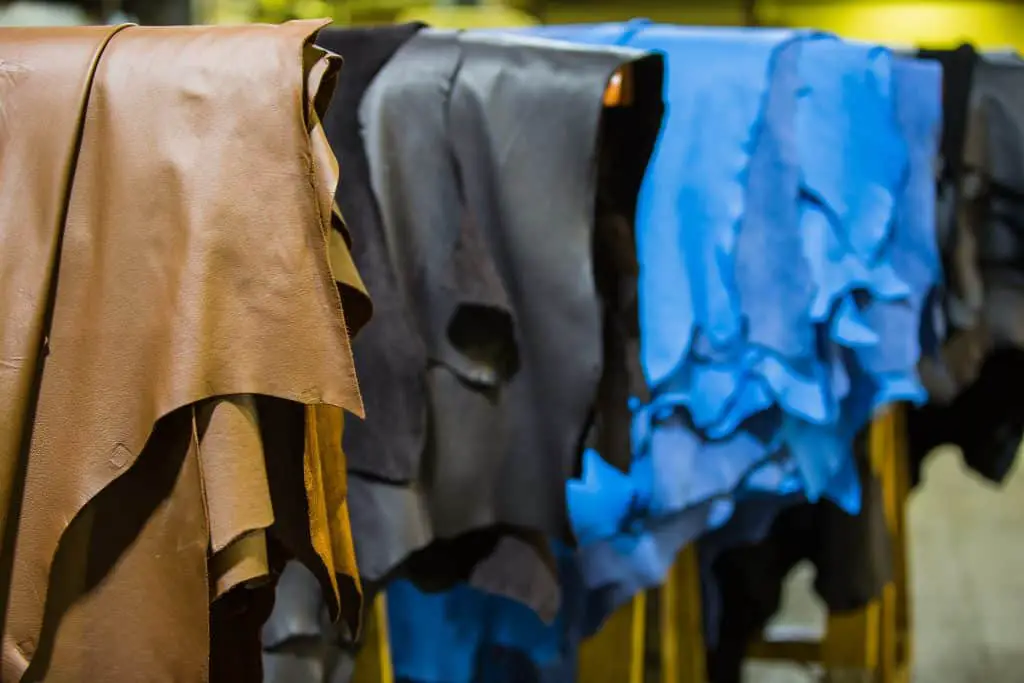If you’ve been looking for a new wallet, or a stylish leather messenger bag, you’ve likely come across this term. You may have wondered what vegetable tanned leather was made of, or even wondered if it was vegan.
So to set this straight – vegetable tanned leather is real leather (so not vegan, clearly!). The term “vegetable” in the name refers to the natural tannins (derived largely from bark) used in the tanning process, not the leather.
Note: some people use the term “veg tan” to describe vegetable tanned leather. We promise to never do that…

Want to know more? Read on for our complete guide!
What is Tanning?
To change any animal skin into the form of leather used in consumer goods, from handbags to wallets to shoes, the hide must undergo a process called “tanning.” Simply put, vegetable tanned leather is leather processed using natural, rather than chemical, tannins. But in order to understand why vegetable tanned leather is the highest quality, most eco-friendly and healthiest option, you need to know a bit about tanning in general and the other major methods, including chrome, synthetic, and aldehyde tanning.
How Tanning Makes Skin into Leather
Tanning begins at the slaughterhouse. Almost all cows and some pigs, after they have been slaughtered for consumption, are skinned and their hides treated with salt. The skin is always removed before the heat has a chance to leaves the connective tissues of the skin. This is done for two primary reasons, 1) animals skins are simply easier to remove when the animal is still warm and 2) the connective tissues will start the breakdown process immediately, which makes removing the hide quickly important, to ensure a quality hide to start the tanning process.

After removal, the salt dries out the skin to prevent putrefaction. Skin is, after all, an organic compound that will rot. Salting is a natural method of drying out the skin and preventing bacteria and other microorganisms from growing and rotting the skin. After the hides are removed and salted, they are typically put in a lime bath to remove the hair. Finally, the tanning process can begin.
Tanning an animal hide transforms it into the material we know as leather by permanently altering the protein structure of the skin. You’ve probably heard of collagen before; that’s the protein in our skin that gives it structure and that beauty creams claim to increase to get rid of wrinkles. The tanning process stabilizes these collagen proteins to increase durability, prevent decomposition, and add color.
Before the 19th century, the tanning process involved bathing hides in naturally-derived “tannins,” which are acidic chemical compounds found in the bark of, for example, oak and fir trees. This is how the term “tanning” originated. This natural tanning process has been practiced for nearly eight millennia and was the dominant form of leather creation in Ancient Greece and Rome.
In the Middle Ages, vegetable tanned leather was even used as armor. During the Industrial Revolution in the mid-19th century, tanneries took a cue from doctors who soaked their sutures in a chemical solution called chromium III to sanitize them. They discovered that this same solution could be used to make leather. These new leathers were softer than traditional leathers and could be used in a number of new industries, including the belts of machines and automobiles.
Manufacturers also realized that these softer leathers were good for footwear and upholstery. Due to their softer feel and quicker processing, chrome tanned leather came to replace traditional vegetable tanned leather.
Varieties of Tanning Methods
Today, chrome tanning is the most popular method of tanning, accounting for somewhere between 80-90% of the leather market. It is also the oldest kind of chemical tanning. Chrome tanning is a fairly speedy process–taking between one and three days–and leaves the leather soft and uniformly colored after it is dyed. Chrome-tanned leather reacts well to water, so you don’t have to worry about getting it wet, and tends to keep its finish over the life of the leather.
On the downside, that life is not especially long and chrome tanning uses extremely harsh, even carcinogenic, chemicals that harm the environment and the people who make it, causing everything from water pollution to cancer. Chrome tanned leather also has a distinctive chemical smell that many people do not like. Yet because it is a relatively inexpensive method that yields quick results, most of the leather produced worldwide uses chrome tanning techniques.
Aldehyde tanning, otherwise known as “wet white” because of the off-white color of the raw product, is another form of chemical tanning second only the chrome tanning in popularity. Softer than chrome tanned leather, aldehyde-tanned leather is also water absorbent and can be machine washed. It’s used most often to make chamois, otherwise known as the “shammies” typically employed to wash cars and windows.
Synthetic tanning was developed during the second World War because vegetable tannins were being rationed. Instead, tanneries turned to synthetic tannins or “aromatic polymers” like Novolac, Neradol, and Melamine. Like aldehyde tanning, synthetic tanning produces a supple white leather.

Vegetable tanning, unlike these other methods, uses natural tannins derived largely from bark. Using a traditional process and often sourcing tannins from local tree bark, vegetable tanning produces a durable, strong leather that–properly cared for–can last for generations. While vegetable tanning does use more water than chrome tanning, it does not produce harmful chemical by-products.
Not nearly as supple as its chrome tanned cousin, vegetable tanned leather also comes in a more limited range of colors. Typically, it can be found in earth tones rather than brighter colors. However with use these leathers develop a unique and rich patina. Vegetable leather also tends to scratch more easily than other types. That said, a trip to a repair shop can buff out most surface scratches and imperfects.
In general, it’s best to be a bit more careful with your vegetable tanned leather, as it is also more sensitive to excessive heat and is not as water resistant. Especially during the first year, you should be careful to avoid water. After a year, the leather becomes a bit more water resistant. The biggest downside to vegetable tanned leather–and the reason chrome tanned leather dominates the market–is that it’s a more expensive product that take significantly longer to produce.
Whereas chrome tanning takes only a few days at most, vegetable tanning can take up to 60 days. After these two months, the leather is typically worked by hand. So while it is more expensive, vegetable tanned leather certainly provides a higher quality, more durable product when properly cared for.
Some Drawbacks of Vegetable Tanned Leather
- It’s more sensitive to extreme heat
- It’s not as water resistant, so keep it out of the rain
- It can scratch more easily
- It comes in fewer colors and typically not in bright colors (although not in the case of Bellroy)
- It can be more expensive
Major Advantages of Vegetable Tanned Leather
- It’s eco-friendly, using a natural production process
- It’s more durable and longer-lasting than leather tanned using harsh chemicals
- It softens over time, molding to, for example, your credit cards
- It gains a rich patina, or pattern of wear, over time
- It comes in earthy hues that darken with age as part of the patina process
- Surface scratches easily buffed out by a professional
- Vegetable tanning is typically a hands-on, artisanal practice performed by experts while chrome tanning can take advantage of the health and well-being of impoverished people in developing nations
Vegetable tanned leather is, on the whole, a higher quality product that will last longer and age more gracefully than other leathers. And its production process does not produce carcinogenic by-products, making it a better choice for the environment and for the people involved in that production. But vegetable tanned leather does need more regular TLC. But how should you care for your vegetable tanned leather bag, wallet, or shoes?
How to Care for Vegetable Tanned Leather
Caring for vegetable tanned leather is important for keeping it soft and extending its life. The most important things you can do to care for it are:
- Invest in an animal hair brush for brushing off dirt and applying cleaner, conditioner and wax
- Avoid water and excessive heat. Water can discolor the leather and high heat causes it to dry out and crack.
- Clean your leather once a week. A basic cleaning involves brushing the leather and wiping it down with a damp (not wet!) cloth. More serious cleaning should be done less often, as little as once a year. Be sure to use natural products like saddle soap that will not dry out the leather.
- If your leather is looking dry, use an oil or cream conditioner on it. It’s best to do this at regular intervals, and the amount of time between treatments depends on the environment where you live. Try not to use a product that has more than 50% wax; 100% oil products are the best.
- If you’re noticing scratches in your leather or you don’t feel comfortable maintaining it on your own, find a local leather care or cleaning service and let the experts handle it!
Well cared for vegetable tanned leather can last upwards of 40+ years. Depending on when you purchase it, that means that you might be able to hand down your wallet to your grandkids!
Classic Men’s Wallet in Vegetable Tanned Leather
Vegetable Tanned Leather – Wrap Up
Vegetable tanned leather, in short, is a leather you can feel good about. It is an investment that will last a lifetime and you can also feel good about where that money is going. Rather than into chemical vats that wind up leaching materials into the ecosystem or into unsafe workplaces in developing nations, your money can support small-scale, traditional tanneries that support workers and the environment.
All product names, logos, brands, and trademarks are the property of their respective owners

